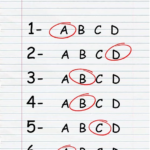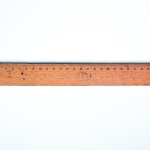Percentages
17 What is a Percent Anyway?

Remember the last time you wrote a test? What percentage did you receive? If you got 30 out of 35, could you calculate the percentage? How about finding out the percentage of students who like math? How would you calculate that number?
Percentages are used in many different areas of our lives. For example, we hear about the interest rate or unemployment rate, the percentage of people who prefer hockey over football or the percentage of people who prefer science over math. Percentages are a useful way of making comparisons. This chapter will deal with percentages: how we get them, and how we can use them.
What Exactly is a Percent?

The word “per cent” means “out of 100.” In math language, when we say “out of” we are really saying “divided by.” Therefore, when we are dealing with percent, the basis of it is to divide by 100. The word “cent” on its own refers to 100. The word cent is actually Latin for 100. This relates to many things. The easiest might be the word century, which means 100 years.

You can also think of words like centimetre. There are 100 centimetres (cm) in 1 metre. Or, how about the word cent when it comes to money? In money, 100 cents equals 1 dollar.
Are you beginning to see the trend here?
Now, think about the last time you wrote a test out of 100. Let’s say you scored very well and scored 92 out of 100. That would be the same as saying you received 92 percent.
Written mathematically, it looks like this:
92%

The symbol % means percent and can be used in place of writing the actual word percent. You can find this symbol on your computer keyboard, generally on the same key as one of the numbers. On my keyboard, the percent symbol is on the same key as the number 5. To get the % symbol, you would press the [Shift] and [5] keys at the same time.
The following is an example of percent.
According to a recent survey by BCIT Piping Foundation Instructors, 25% of students coming into the Piping Foundation Program would like to get into the plumbing trade, 20% would like to get into the steamfitting trade, and 10% would like to get into the gasfitting trade. The remaining 45% of students are undecided when they begin the program. If you add up those percentages, they equal 100.
| Piping Trade | Percentage |
|---|---|
| Plumbing | 25% |
| Gasfitting | 10% |
| Undecided | 45% |
| Total | 100% |
What the numbers reveal is that if you took 100 students and asked them which piping trade they were looking to get into, on average, 25 would say plumbing, 20 would say steamfitting, 10 would say gasfitting, and 45 would say that they are undecided. (Note: These are generalizations, not actual facts.)

Stop here for one second. Does that mean that every time you have a survey, and you are looking to find percentages, you need to have 100 participants?
No, it doesn’t.
We’ll go through that in just a bit, but for now just know that percentages are based on 100 but don’t necessarily reflect that we have 100 people, items, or questions, etc.

